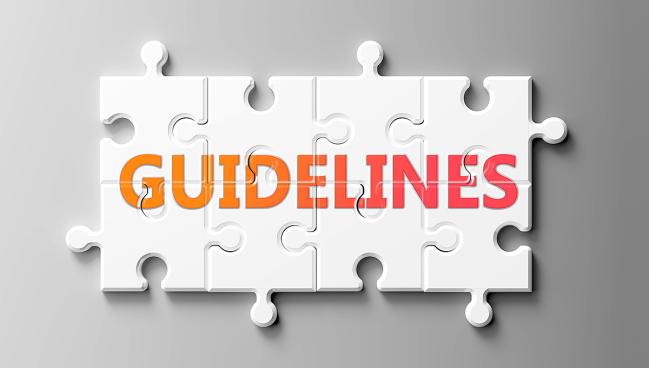ESC Issues New ACS Guidelines: Directions on Invasive Timing, DAPT, and More
The guidelines posit ACS as a spectrum of conditions, noting there are many shared pathways for STEMI and NSTEACS care.

AMSTERDAM, the Netherlands—The European Society of Cardiology (ESC) has issued new guidelines for the management of patients with acute coronary syndrome, emphasizing that clinicians think of ACS as a spectrum of conditions.
The guidelines, which were presented last week at the ESC Congress 2023 and published simultaneously in the European Heart Journal, combine into a single document recommendations for the management of STEMI and NSTE ACS patients, both of which were previously published as individual guidelines in 2017 and 2020, respectively.
Maria Rubini Gimenez, MD (Leipzig Heart Center, Germany), a member of the task force that drafted the document, said the rationale for publishing a single guideline is that acute myocardial infarction—both STEMI and NSTEMI—and unstable angina fall under the umbrella of ACS.
“We believe that all patients who present with suspected acute coronary syndrome should undergo a similar pathway, where three variables will help go from a working diagnosis to a final diagnosis,” she said during a plenary session outlining the new guidelines. “That’s the clinical presentation, ECG, and in the majority of the cases, high-sensitivity troponin testing.”
After the acute management and stabilization phase, Gimenez said that most aspects of the subsequent management strategy are common to all patients with ACS, regardless of the initial ECG and presence/absence of cardiac troponin elevation at presentation.
“The initial triage and invasive management may differ slightly, but after that, many things are common,” Robert Byrne, MBBCh, PhD (Mater Private Network, Dublin, Ireland), who chaired the ACS guideline task force, told TCTMD. Given the overlap between STEMI and NSTE ACS, “there was a bit of redundancy between the two previous [guidelines],” he said. “Our job was to combine it into a single coherent document and to keep it at a manageable length.”
Some Changes and Revisions
The ACS guidelines, which were 2 years in the works, include a number of new recommendations, including those for antiplatelet and anticoagulant therapy. There are a range of recommendations for alternative antithrombotic regimens in different patient populations, such as those at high bleeding risk, as well as recommendations for managing ACS patients with comorbid conditions, those presenting in cardiogenic shock, and those presenting after cardiac arrest.
The task force also includes technical considerations for invasive strategies, recommendations for in-hospital patient management, and recommendations for managing patients with MI with nonobstructive coronary arteries (MINOCA), among a range of other situations.
Byrne said one key element of the new guidelines pertains to the timing of an invasive strategy in patients with NSTE ACS. In the 2020 guidelines, invasive catheterization within 24 hours was a class I recommendation for high-risk patients, but this has been downgraded to a class IIa recommendation. The reason, said Byrne, is that the data supporting the early invasive strategy are heterogeneous—with variable definitions of “early”—and that the benefit of this early strategy seems to be in reducing future revascularizations.
“There wasn't any sign of a signal of difference in terms of mortality or stroke or other hard outcomes,” he said. “On balance, we felt that this data was more consistent with the IIa recommendation.”
Our job was to combine it into a single coherent document and to keep it at a manageable length. Robert Byrne
Another key recommendation pertains to the management of patients presenting with cardiac arrest. Previous guidelines recommended delayed (as opposed to immediate) angiography for hemodynamically stable patients without ST-segment elevation successfully resuscitated after out-of-hospital cardiac arrest (OHCA), but that is no longer the case. Routine early angiography for these patients is now a class III recommendation (level of evidence A) on the basis of randomized trial data. In the TOMAHAWK trial, taking resuscitated OHCA patients without STEMI quickly to coronary angiography didn’t boost mortality, nor did it improve neurologic outcomes. COACT showed similar results.
When it comes to STEMI patients with multivessel disease undergoing primary PCI, complete revascularization is supported, but the recommendation has been tightened up and strengthened. Previously, routine revascularization of non-infarct-related lesions was recommended before hospital discharge (class IIa, level of evidence A), but now complete revascularization is recommended either during the index procedure or any time within 45 days (class I, level of evidence A). Moreover, PCI of these nonculprit lesions should be based on the angiogram (class I, level of evidence B).
Antithrombotic Therapy in ACS
During the ESC session, J.J. Coughlan, MBBCh (Mater Private Network), walked through recommendations for antithrombotic therapy for ACS patients. Parenteral anticoagulation is recommended for everyone at the time of diagnosis (class I, level of evidence A), with unfractionated heparin preferred (class I, level of evidence C) over enoxaparin and bivalirudin (both class IIa, level of evidence A) in STEMI patients undergoing primary PCI. In NSTE ACS, unfractionated heparin is recommended for those undergoing angiography within 24 hours (class I, level of evidence B), although enoxaparin can be considered as an alternative (class IIa, level of evidence B).
When it comes to dual antiplatelet therapy (DAPT), aspirin plus a P2Y12 inhibitor is recommended as the default strategy for 12 months after ACS (class I, level of evidence A).
“But there has been a lot of research into alternative strategies for these patients, largely aimed at reducing bleeding risk in the first 12 months,” said Coughlan. “In general, these can be divided up into DAPT abbreviation strategies, so shortening the duration of DAPT followed by single antiplatelet therapy, or DAPT de-escalation strategies, [such as] moving from potent P2Y12 inhibitor-based DAPT and changing to aspirin and clopidogrel.”
In patients free of events after 3 to 6 months on DAPT and who are not at high risk for ischemic events, use of single antiplatelet therapy (preferably with a P2Y12 inhibitor) has a class IIa recommendation (level of evidence A) while de-escalation may be considered to reduce bleeding risk in select patients (class IIb, level of evidence A). In patients at high bleeding risk, aspirin or P2Y12 inhibitor monotherapy after 1 month of DAPT can also be considered (class IIb, level of evidence A). It’s not recommended that any patients de-escalate DAPT in the first 30 days after ACS, a recommendation that was further backed up by the STOPDAPT-3 trial presented at the ESC Congress.
Twelve months after ACS, aspirin monotherapy remains the recommended longer-term treatment choice, but alternative strategies are also available to further reduce ischemic risk, said Coughlan.
For all antithrombotic therapy regimens, the Achilles heel tends to be bleeding. J.J. Coughlan
To TCTMD, Byrne said there are a large number of studies looking at shorter-duration DAPT, among them TWILIGHT, SMART-CHOICE, GLOBAL LEADERS, STOPDAPT—2 ACS, and MASTER DAPT. Still, the guideline task force had some concerns about these data, particularly with how generalizable the results were to real-world practice. In these trials, Byrne noted, mortality rates at 30 days are quite low, suggesting lower-risk patients may have been enrolled. Additionally, STEMI patients have been underrepresented in many of the trials.
In clinical practice, Byrne said physicians will follow patients for 1, 3, or 6 months to see how they’re doing. “At that stage, you may consider changing them to a monotherapy strategy, but 12 months at the time of the index intervention should remain the recommended approach,” he said.
Additionally, the guidelines also provide direction on how to manage ACS patients with indications for oral anticoagulation. In the first week, triple antithrombotic therapy with a non-vitamin K antagonist oral anticoagulant (NOAC) and DAPT is recommended (class I, level of evidence A), which should then be followed by dual antithrombotic therapy (NOAC plus single antiplatelet therapy) for up to 12 months (class I, level of evidence A). At that point, switching to NOAC monotherapy is recommended. In patients at high risk for ischemic events, the guidelines recommend triple antithrombotic therapy for 1 month followed by a switch to a NOAC plus single antiplatelet therapy for up to 12 months, and then NOAC alone beyond a year.
“For all antithrombotic therapy regimens, the Achilles heel tends to be bleeding,” said Coughlan. “It’s important that we think about, in all of our patients, simple strategies that we can adopt to reduce bleeding risk. This includes adjusting our medication doses to renal function and weight, with a particular focus on high-risk groups, including older adults and females.”
Additionally, radial access for PCI, when feasible, can mitigate bleeding as can use of proton pump inhibitors, said Coughlan.
Finally, the guidelines emphasize the importance of long-term treatment after ACS, with goals including sustained, healthy lifestyle choices and continued pharmacological treatments, including lipid-lowering therapy and influenza vaccination. LDL cholesterol goals should be less than 55 mg/dL (1.4 mmol/L) and blood pressure targets should be less than 130/80 mm Hg, if tolerated. Hemoglobin A1c levels should also be kept in check. A structured, supervised cardiac rehabilitation program after ACS remains a class I recommendation.
Michael O’Riordan is the Managing Editor for TCTMD. He completed his undergraduate degrees at Queen’s University in Kingston, ON, and…
Read Full BioSources
Byrne RA, Rossello X, Coughlan JJ, et al. 2023 ESC guidelines for the management of acute coronary syndromes. Eur Heart J. 2023;Epub ahead of print.
Disclosures
- Rubini Gimenez reports receiving honoraria and/or serving as an investigator/committee member for trials with Siemens Healthcare, OrthoClinical Diagnostics, Roche Diagnostics, and Quidel.
- Byrne reports research or education grants (no personal remuneration) from Abbott Vascular, Biosensors, Boston Scientific, and Translumina.
- Coughlan reports no relevant conflicts of interest.





Comments